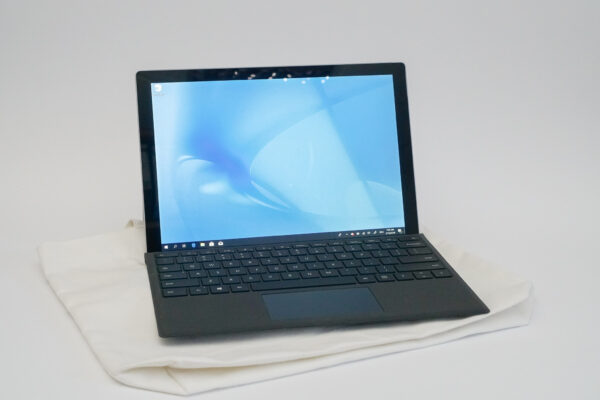
Earlier this month, Microsoft sent a couple of Surface devices my way. The Surface Pro 6, Surface Laptop 2, and Surface Go where all excellent devices, each one serving different purposes. I’ll start off my review of the trio with the Surface Pro 6.
Just like how Apple created a new device category with the iPad, I think Microsoft deserves credit for what their Surface tablet brings to the table. This isn’t just a two-in-one hybrid or convertible device. It is a tablet that transforms into a notebook when you add a detachable keyboard cover to it. The Surface tablet is truly in a subcategory its own, one that its continues to dominate today with the Surface Pro 6.
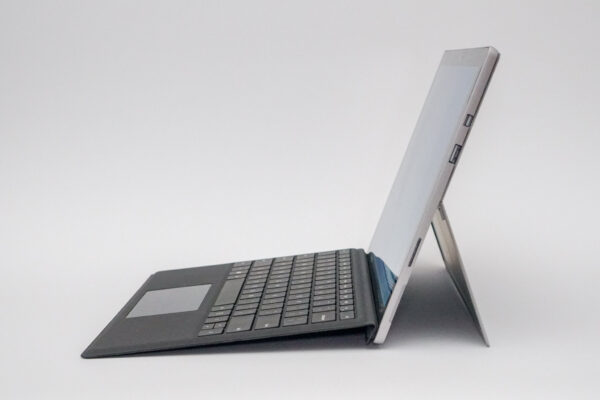
As its name implies, the Surface Pro 6 is the sixth generation Surface tablet from Microsoft. Announced in October 2018, the Surface Pro 6 is mostly a spec refresh. The small changes are a reflection of the maturity of the Surface tablet line. However, Microsoft still isn’t doing that one thing the Surface Pro 6 needs to address a major shortcoming on its predecessor.
With a 12.3-inch screen, the Surface Pro 6 is extremely portable. The tablet itself measures just 292 x 201 x 8.5 mm and weighs 771 grams. The detachable keyboard cover is usually sold separately, but you should get it if you ever want to use the Surface Pro 6 as a notebook. There are several Type Covers, as the keyboards are known, available, but they all typically add 5 mm of thickness and 310 grams of weight. The whole package definitely still counts as an ultra-portable.
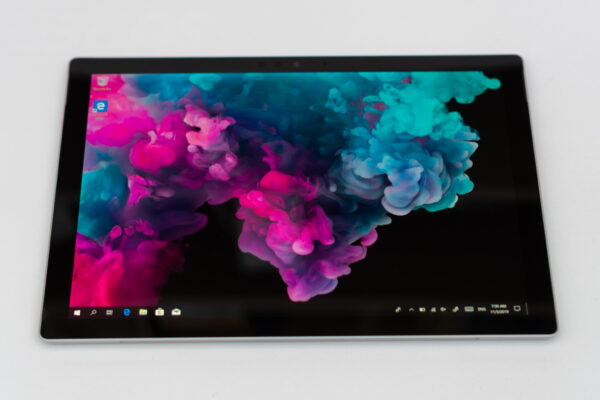
The Pixelsense display has a resolution of 2736 x 1824 with a 3:2 aspect ratio. It might not be the perfect dimensions to maximise movie enjoyment, but this aspect ratio works well for getting work done. The display is sharp, bright, and has great contrast. Colour gamut is decent. Measured with Spyder5PRO, the Surface Pro 6 scored 96% sRGB, 67% NTSC, and 72% AdobeRGB coverage.
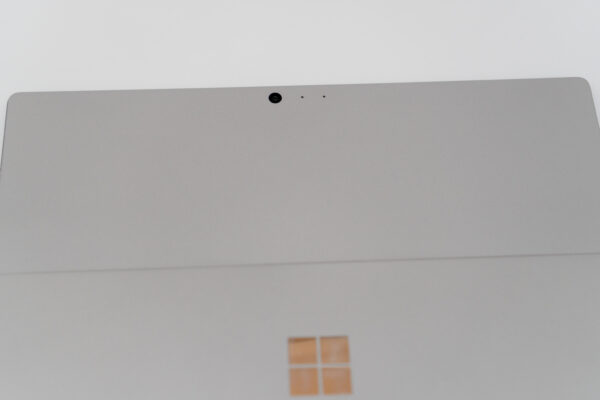
There is a 5 MP camera above the display. You can use this camera for Windows Hello logins too. The camera quality is decent enough for Skype calls. I don’t find the rear 8 MP camera particularly useful, but it’s there if you like to use it like you might do with the main camera on your smartphone. It’s a bit unwieldy to grapple with a tablet for photo-taking, not to mention that your smartphone will almost certainly take better photos.
The Surface Pro 6 continues to sport Microsoft’s proprietary Surface Connect port. In principle, the Surface Connect port might have been a great idea five years ago. Attached magnetically like Apple’s MagSafe, the Surface Connect is similarly used to deliver power. However, unlike MagSafe (or MagSafe 2), the Surface Connect can also connect to the Surface Dock which offers a generous variety of other ports.
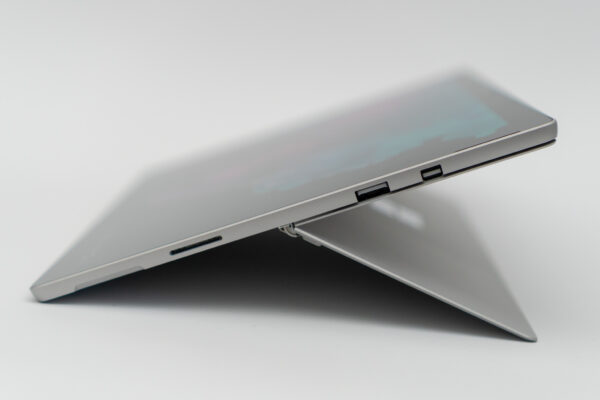
Unfortunately, today we have Thunderbolt 3, and most of us will prefer that, or if not, at least have USB Type-C with Power Delivery.
Other ports available on the Surface Pro 6 include one USB 3.0 type-A port, one Mini DisplayPort, a 3.5mm headphone jack, and a microSD card reader.
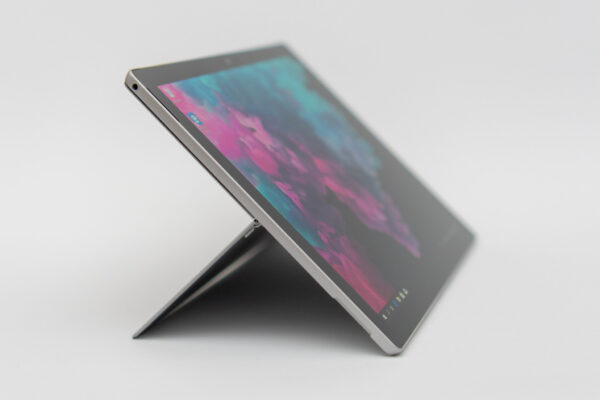
The Surface Type Cover keyboard is surprisingly good. I find the typing experience on it is better than that of most notebook keyboards. That’s quite a significant achievement considering that the Type Cover being, after all, a cover is thin and isn’t as stable as the actual body of standard notebooks. There is 1.3 mm of key travel, which is generous given how thin the keyboard needs to be. The keys are clicky and reasonably spacious. The keys are back-lit too.
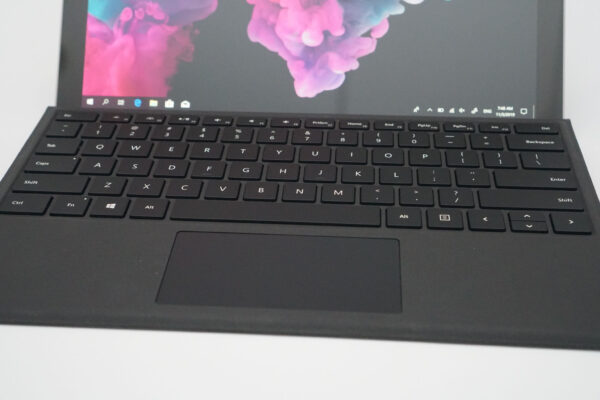
The keyboard can be folded up to be a cover for storage or carrying around. You can also fold it behind the Surface Pro 6 in order to use in tablet mode. You can, of course, remove it altogether. It attaches conveniently via magnetic contacts. There’s no need for any Bluetooth, nor separate battery to charge.
There are three versions of the Type Cover, one of which includes a fingerprint reader, in case that is something you need or want to have.
Like the keyboard, the Surface Pen is a separate purchase. This pen offers 4,096 levels of sensitivity, and it has tilt support for shading in some apps. The eraser button on the top of the pen is very natural to use, almost like working with a real pencil.
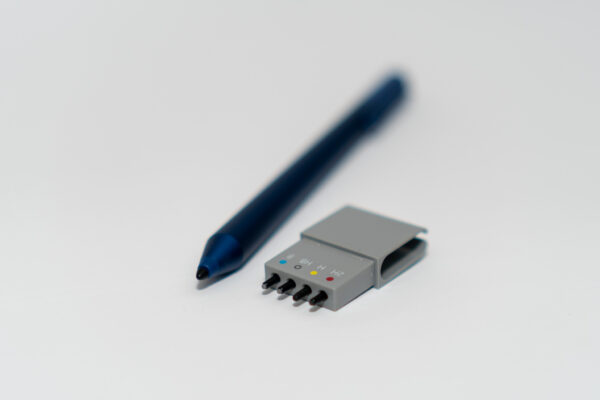
The writing experience, if you will, with the Surface Pen is superb. I think it’s one of the best, if not the best, styli you can get. You can even customise how you want the pen to fee. Four interchangeable nibs allow you to choose between 2H, H, HB, and B hardness levels. The first two feel like a hard tip ballpoint pen, HB is like a regular pencil, and B soft like a marker. This is about how the physical pen actually feels like while gliding on the glass display, not the line effect that is produced within the app.
Under the hood, the Surface Pro 6 now comes with 8th generation Intel Core processors. My review unit is configured with an i5-8250U, but there is an option for an i7-8650U. You can get configurations with 8 or 16 GB of LPDDR3 RAM, and SSD storage in 128 GB, 256 GB, 512 GB, or 1 TB capacities, though not all possible combinations are available.
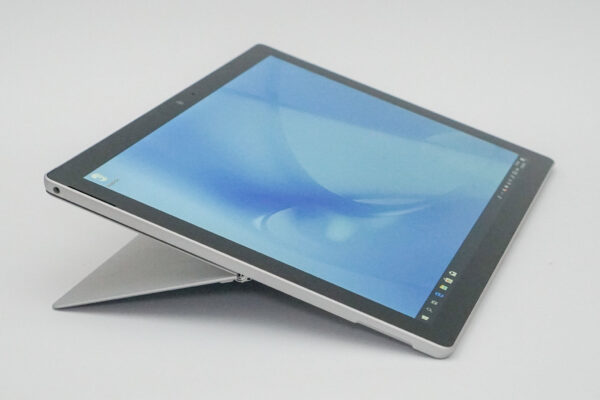
Performance is about what you would expect from 8th generation Intel Core processors. On PCMark 10 Extended, my review unit scored 2464 (overall), 6870 (essentials), 5201 (productivity), 2898 (digital content creation) and 963 (gaming). The Geekbench 4 single and multi-core scores are 4097 and 13590 respectively, and 36225 for the compute score.
Battery life on the Surface Pro 6 is outstanding. PCMark 8 Home Convention battery test ran for 5 hours and 47 minutes, among the best of all notebooks I’ve tested. In real world use, the Surface Pro 6 should last 10 hours.
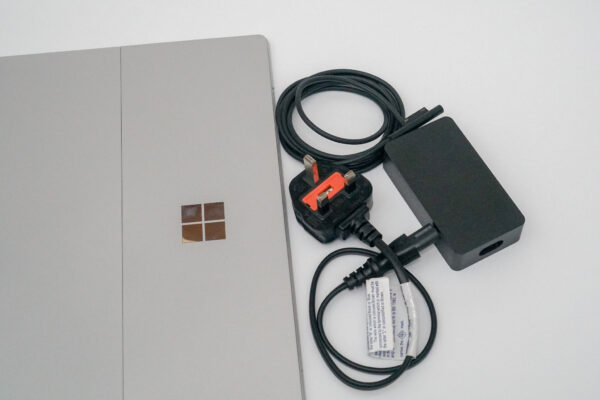
Microsoft doesn’t include much accessories in the box. You only get a Surface Connect power brick. As mentioned earlier, the pen and keyboard are extras, although sometimes you may a bundle offer available.
My experience working with the Surface Pro 6 over the last two week or so has been amazing. This is the MacBook Pro cum iPad Pro for Windows users. The Surface Pro 6 is so portable and easy to bring around. It’s so light that you can really hold it up one-handed to take notes without feeling fatigued. However, the small screen size may be a little hard to get serious work done while on the go, but this is something I can put up with. Once at home or at work, I can always hook up a big monitor. I can also put up with the fact that it’s hard to work with the Surface Pro 6 on my lap.
The Surface Pro 6 would still have been quite perfect. Unfortunately, for a flagship device launched in 2018 not having USB Type-C support is a big disappointment. If you can look past this, the only thing left you need to consider is if the tablet not sitting on your lap is alright for you.
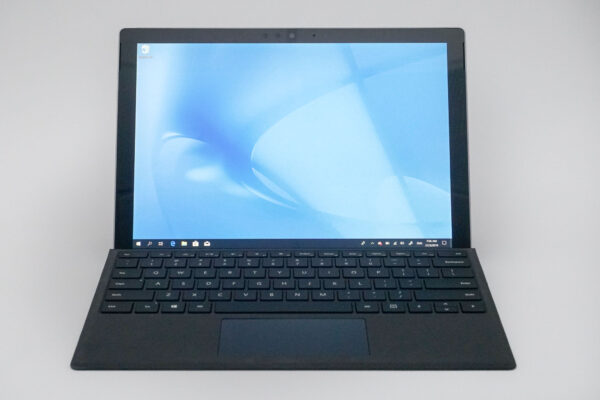
The Surface Pro 6 price starts from S$1,398. This review unit, configured with an i5-8250U, 8 GB RAM and 256 GB storage, retails at S$1,788. The Surface Pen retails at S$148, and the basic Type Cover is priced at S$199.
Conclusion
Microsoft’s Surface Pro 6 is an incremental, yet important, update. The small changes reflect an excellent product that has little else to be improved, except for that glaringly missing Thunderbolt 3 / USB Type-C support which remains absent.
Pros:
- Very compact, very light
- Very functional design
- Excellent battery life
- Type Cover keyboard is excellent
Cons:
- No Thunderbolt 3 / USB Type-C
- Pen and keyboard are extras
View Comment Policy